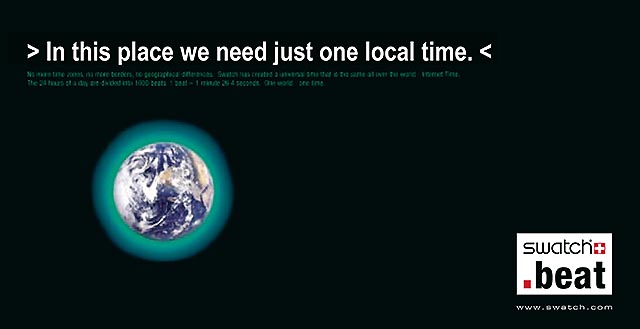
The Belated Triumph of World Time
The history of Universal Time goes back to the 19th century. Back then, seafarers and scientists used Greenwich Mean Time (GMT). The day began, as was usual in astronomy, at noon.
Then, in 1925, this was changed so that the day began as from midnight. Although this was more practical for aviation and radio communication, it led to confusion. As a result, in the US this new GMT was called Greenwich Civil Time (GCT).
In 1928 GMT became Universal Time (UT); the US also adopted the new designation, but not until 1952.
International Atomic Time (TAI) was introduced in 1967. Universal Time Coordinated (UTC) is derived from TAI. Since then, leap seconds have been added on occasion because of the Earth’s irregular rotation.
In 1998 Swatch snappily asked: Why not go decimal? 1 Day = 1000 Beats. And, of course, the company immediately launched its watches for Swatch Internet Time.